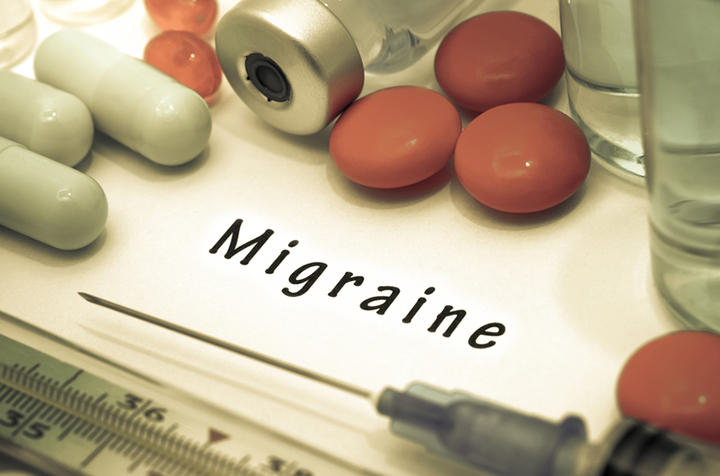Medical News Today Article Written by Jessica Freeborn on September 24, 2024 — Fact checked by Amanda Ward.
Finding the right medication to help with migraine attacks can make all the difference in symptom relief. Experts are interested in finding the best medication choices and comparing them.
A systematic review and network meta-analysis published in The BMJ compared the options for oral monotherapy treatment of migraine attacks, looking at data from 137 randomized controlled trials and almost 90,000 individuals.
Overall, eletriptan was the most effective at eliminating pain after 2 hours, and one of the most helpful in achieving sustained freedom from pain.
The evidence also suggested that certain triptan medications were more effective than more recent migraine drugs like lasmiditan and ubrogepant.
Most triptans better for pain relief than newer migraine drugs
Migraine attacks involve, among other symptoms, painful headaches that can last for days. Medications can be a common option for symptom relief. One type of medication used to treat acute migraine is triptans, which ultimately helps constrict blood vessels and block pain signals to improve migraine symptoms.
In this review, researchers wanted to compare oral monotherapy options for migraines. They looked for studies from several sources, including the Cochrane Central Register of Controlled Trials and the World Health Organization International Clinical Trials Registry Platform. They included double-blind, randomized controlled trials that compared by-mouth medications to a placebo or other treatment.
The trials included individuals who were at least 18 years old and had a diagnosis of migraine. Researchers focused on freedom from pain 2 hours after taking medication and 2–24 hours after taking medication. They included 137 randomized controlled trials and looked at the effects of 17 medications. Among participants, 62,682 received drug-based treatments, while 26,763 received a placebo.
All medications were superior to the placebo. When comparing the drug interventions, researchers found that at the 2-hour mark, eletriptan was more effective than almost “all of the other active interventions” in achieving freedom from pain and in terms of participants using rescue drugs.
At the 2-hour mark, the next most effective medications were rizatriptan, sumatriptan, and zolmitriptan. When looking at sustained freedom from pain, researchers found that eletriptan and ibuprofen were the most effective.
Researchers concluded that eletriptan, rizatriptan, sumatriptan, and zolmitriptan were more effective than lasmiditan, rimegepant, and ubrogepant, which are more recently developed migraine treatment medications.
Study author Andrea Cipriani, MD, PhD, a professor of psychiatry at the University of Oxford in the United Kingdom, noted the following highlights of the research to Medical News Today:
“Our analysis identified eletriptan, rizatriptan, sumatriptan, and zolmitriptan as the most effective medications for treating acute migraine attacks. This insight is novel and suggests a need to revise existing guidelines, which currently treat all oral triptans as equally viable […] Our results clearly indicate a preference order for using triptans, a shift that necessitates updates to our clinical practice guidelines. Almotriptan, frovatriptan, and naratriptan, in contrast, are now shown to be less effective.”
Should more people be using triptans for migraine?
Migraine impacts around 10% of people all over the world. It is important for people to have treatment options, and data like this review may help guide treatment recommendations in the future.
Cipriani noted that, “despite their effectiveness, triptans are underused,” as, “according to European population-based data, only 3.4–22.4% of people with migraine are using triptans.”
“Our results demonstrate that specific triptans are the most effective oral medication for treating acute migraine attacks and underscore the need to better inform healthcare professionals and policymakers to ensure optimal patient care,” he added.
Headache neurologist Nina Riggins, MD, PhD, FAAN, FAHS, UCNS, from the Headache Center of Excellence of Palo Alto VA Medical Center in California, who was not involved in this research, told MNT:
“I hope this study will help to draw attention to specific therapies for migraine. One of [the] positive aspects [is] that this study might make a discussion with primary care clinicians on the topic of specific migraine treatments easier. Using proper dose of triptan and changing triptan to another one when needed and appropriate should be discussed with medical care provider[s]. Another important point is that triptans could be more accessible than gepants, due to the cost to some persons living with migraine, especially in the underserved areas of the world.”
However, it is also important to consider that triptans are already a recommended treatment for migraine, with the National Institute of Neurological Disorders and Stroke noting them as the preferred treatment option for the relief of moderate-to-severe migraine pain.
This review also emphasized some side effects of triptan medications, which doctors should consider in clinical practice. For example, eletriptan was associated with chest pain.
The review authors further noted that triptans are not always safe for certain individuals to take. They also noted that further research can reexamine the vascular contraindications for triptans.
How surprising were these results?
Medhat Mikhael, MD, a pain management specialist and medical director of the nonoperative program at the Spine Health Center at MemorialCare Orange Coast Medical Center in Fountain Valley, CA, not involved in the review, said he did not find its findings surprising.
“I would expect these results because the triptan family works by binding to the serotonin receptors causing vasoconstriction to the trigeminal artery that would successfully and quickly abort an acute migraine episode,” he explained.
“Migraine has several causes — including genetic predisposition, hormonal changes — and several triggers. Migraine happens when the trigeminal artery is inflamed and dilated which causes the throbbing headache with associated symptoms,” he detailed.
“However, we need to understand that as the triptans vasoconstrict the trigeminal artery, they vasoconstrict other blood vessels including the coronary arteries, so they are not good to use with patients who have cardiac conditions or cardiovascular diseases. They can also cause other unpleasant side effects like chest tightness,” cautioned Mikhael.
How strong is the evidence supporting these findings?
Among the limitations that this review faces is the fact that the established inclusion and exclusion criteria can mean that certain data were missed or not included in the analysis. For example, researchers only included studies that focused on outpatient participants and only medications that met certain recommendation requirements.
The authors acknowledged that they may have missed some studies or counted others twice in their analyses.
The data that was included could also have affected the results, such as choosing to include published and unpublished studies. Researchers also assumed that participants who had missing data experienced negative outcomes and were only able to look at data on pain relapse for up to two days on three medications.
This review and analysis further assume that it is possible to make valid indirect comparisons in this situation, which warrants some caution when looking at the results.
Moreover, it is important to acknowledge that each included study had its own limitations that may have affected the overall findings. For example, the pharmaceutical industry sponsored many of the studies, indicating possible bias.
Most participants were female, and most trials came from America and Europe, which could mean that more diverse study cohorts will be required in the future.
The researchers also lacked individual patient data, and they did not include data on combination drugs or the use of medications via other routes.
Furthermore, they did not focus on the type of oral formulation, cost-effectiveness, or data on response consistency “across migraine episodes.” They could not quantify certain outcomes and did not look at certain clinical issues that might guide treatments in the clinical setting.
Another point to take into account is that the researchers analyzed the certainty of the evidence, and found it varied from high to very low. They cautioned that “confidence in our findings was low or very low for most comparisons.”
They found that some studies did have a high risk for bias in certain outcomes and observed moderate heterogeneity for most outcomes, and noted some inconsistencies among comparisons for some outcomes.
Finally, the researchers noted that the observed effectiveness of ibuprofen in achieving sustained pain freedom came from one study with a low placebo response, which could have also impacted the findings.
Despite these limitations, the results highlight how certain triptans remain effective and viable treatment options, even with newer migraine medications available.
Read full article here.

